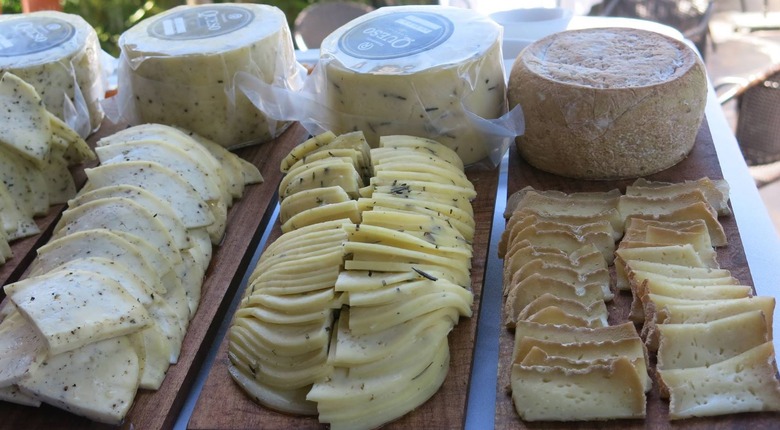Hooked On Cheese: International Artisan Cheeses: Final Stop, Mexico
The vast majority of artisan cheese is made in Europe and the United States; last year, the two regions produced 81.7% of the world's cheese. But while the rest of the world may contribute less in terms of quantity, some unexpected countries are currently playing integral roles in the global artisan cheese renaissance. This series profiles a few of these nations and celebrates the dairies that are putting their countries on the (cheese) map. Find part one, on the cheese of India, here, and part two, on the cheeses of Japan, here.
In the United States, the phrase "Mexican cheese" suffers from many false perceptions. It brings to mind the mass-produced, pre-shredded taco-topping bags commonly found in the processed cheese aisle of the supermarket, all of which are made in America (not Mexico!). Secondly, many Americans assume that because of a few cases of food contamination found in Mexican cheeses over the past ten years, all cheeses from Mexico must be of questionable quality, which couldn't be further from the truth. In addition, a ton of people think that Mexicans only make fresh, cow's milk cheeses – like queso fresco – while in fact, there are a plethora of distinct regional Mexican cheeses made from all types of milk.
One problem with getting the word out about Mexican cheeses is that many of these small sub-varieties are virtually unknown outside of the country. Because Mexico doesn't have a "protected designation of origin" label (like Europe) that ensures the specificity and quality of artisanal regional products, it's difficult to consistently classify Mexican cheeses. However, there is a small Mexican artisanal cheesemaking scene that is working to change that.
One dairy that is making waves is Rancho San Josemaría, a relatively young farm (founded in 2007) that is located in Querétaro. Working exclusively with sheep's milk, they produce a wide variety of cheeses but are best known for their unbelievably smooth Queso Cremoso, which won a silver medal at the 2011 World Cheese Awards. This fresh cheese has a traditional "sheepy," milky scent and flavor, but is mild and creamy enough to be enjoyed atop sweet biscuits or cinnamon bread.
Another noteworthy Mexican dairy is the storied La Cava de Marcelo in Baja California, which is run by fourth-generation cheesemaker Marcelo Castro. Castro's grandfather, Pedro Ramonetti, was a Swiss-Italian immigrant who began making cow's milk cheeses in Mexico in the early 20th century; Castro continues to use some of his recipes to this day. He primarily produces a Queso Real del Castillo (named after the surrounding area) he has named "Ramonetti," after his great-grandfather. It comes in a few herbed variations and is sold at different ages, ranging from a few days to 3 years old. Queso Real del Castillo is defined as a semi-hard, organic cow's milk cheese from the region; Castro's versions are distinct due to the minerality of his soil and the secret methods developed by his great-grandfather.
A third dairy that is putting Mexican cheeses on the international map is Sierra Encantada, a goat dairy outside the city of Huitzilac. Sierra Encantada has won two major awards in recent years: in 2014, owner Regina Olvera took home the prize for Best New Cheese from the World Cheese Awards for her "Sierra Encantada al Aguacate," and at the 2016 WCAs, she was awarded a Super Gold Medal for her "Flor de Cabra" variety. The Flor de Cabra is a buttery cheese flavored with edible flowers from the state of Morelos, and the honey and orange juice of Huitzilac.
While these cheeses are not yet readily available outside of Mexico, we hope that the mark they're making on the international scene will expedite their reach to all corners of the globe.
You can follow Raymond's cheese adventures on Facebook, Twitter, and his website. Additional reporting by Madeleine James.
